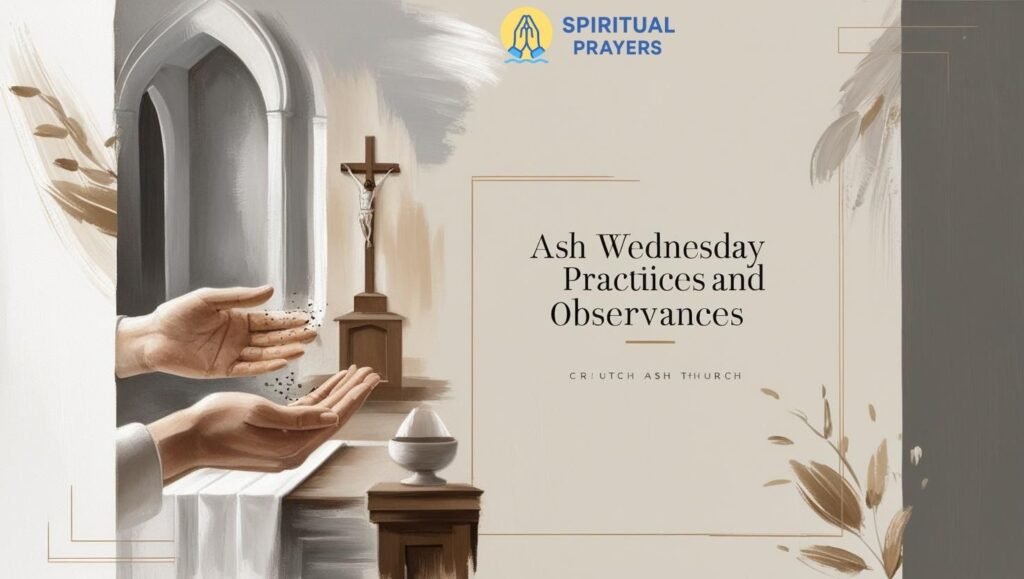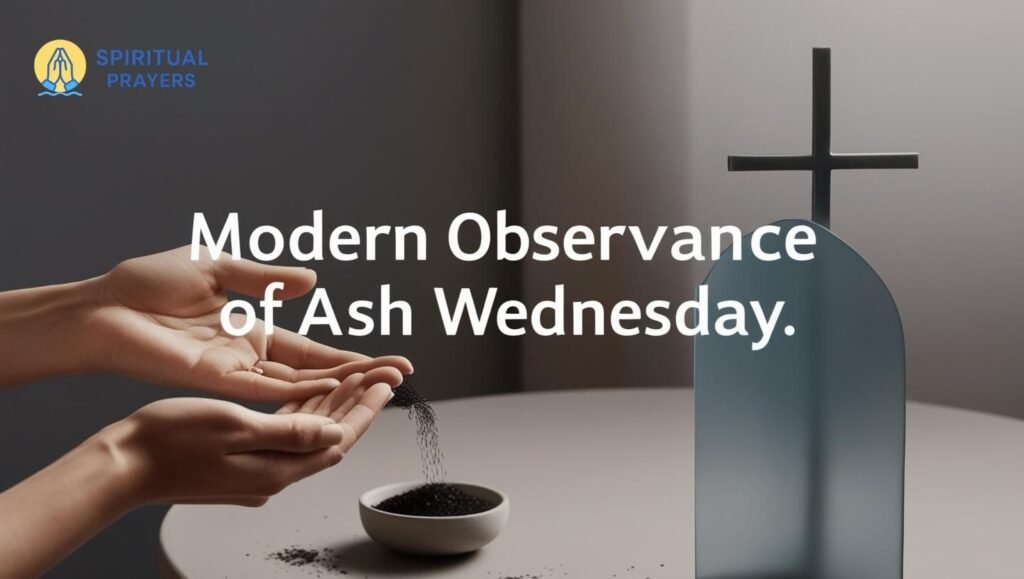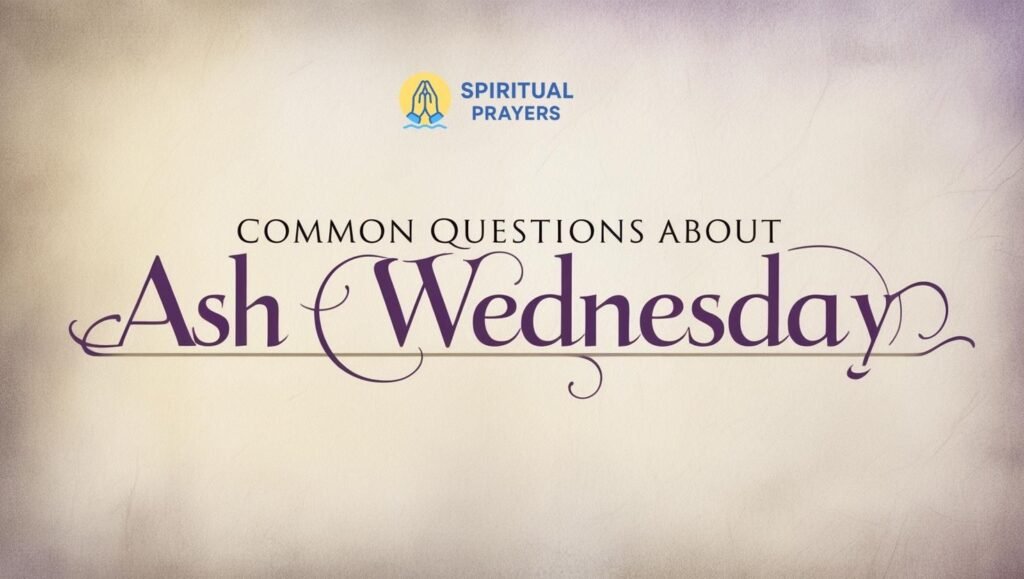
Ash Wednesday marks the beginning of Lent, a 40-day period of reflection, repentance, and spiritual preparation leading up to Easter Sunday in the Christian calendar. This solemn holy day, observed by millions of Christians worldwide, is rich in tradition, symbolism, and spiritual significance. From the iconic ritual of receiving ashes on the forehead to the practices of fasting and prayer, Ash Wednesday sets the tone for a season of renewal and reconciliation with God. This article delves deeply into the origins, meaning, practices, and modern observance of Ash Wednesday, providing a detailed exploration for those seeking to understand this sacred day.
The Meaning of Ash Wednesday in Christianity
Ash Wednesday, often referred to as the “Day of Ashes,” is a Christian holy day that signifies the start of Lent, a season of penance and preparation for the celebration of Jesus Christ’s resurrection on Easter Sunday. The day is rooted in the acknowledgment of human mortality and the need for repentance. The ashes, applied in the shape of a cross on the forehead, serve as a visible reminder of the biblical phrase, “Dust you are, and to dust you shall return” (Genesis 3:19). This practice underscores the transient nature of life and the call to turn away from sin.
The day is particularly significant in Western Christian denominations, including Roman Catholicism, Anglicanism, Lutheranism, and Methodism, though some Eastern Christian traditions also observe similar practices. Ash Wednesday invites believers to reflect on their spiritual journey, confront their shortcomings, and commit to a period of self-discipline and spiritual growth. It is a day of somber introspection, encouraging Christians to align their lives more closely with the teachings of Jesus Christ.
The Historical Origins of Ash Wednesday
The origins of Ash Wednesday trace back to early Christian practices of penance and fasting, which were formalized over centuries. While the exact beginnings are difficult to pinpoint, the tradition of using ashes as a sign of repentance has roots in the Old Testament, where sackcloth and ashes were symbols of mourning and contrition (Job 42:6, Jonah 3:6). Early Christians adopted this practice, particularly in the context of public penance, where sinners would undergo a period of repentance before being reconciled with the church.
By the 6th century, the season of Lent began to take shape as a 40-day period of preparation for Easter, mirroring Jesus’ 40 days of fasting in the wilderness (Matthew 4:1-11). The term “Ash Wednesday” emerged later, with the day being officially recognized in the Western Church by the 10th century. The Council of Benevento in 1091 standardized the use of ashes, making it a widespread practice. Over time, the ritual evolved from sprinkling ashes on the head to applying them in a cross on the forehead, a practice that remains central to modern observances.
The Symbolism of Ashes on Ash Wednesday
The ashes used on Ash Wednesday are laden with spiritual meaning, serving as a tangible reminder of mortality, repentance, and the hope of redemption. Typically made by burning palm branches from the previous year’s Palm Sunday, the ashes are blessed by a priest or minister before being applied. The choice of palm branches is significant, as they symbolize Jesus’ triumphal entry into Jerusalem, which is commemorated on Palm Sunday. Burning these branches into ashes reflects the transition from celebration to humility.
When the ashes are applied, the laborator often recites one of two phrases: “Repent, and believe in the Gospel” or “Remember that you are dust, and to dust you shall return.” These words encapsulate the dual themes of Ash Wednesday: the call to turn away from sin and the acknowledgment of human fragility. The cross shape further signifies Christ’s sacrifice and the promise of salvation, making the ritual both a personal and communal act of faith.
Ash Wednesday Practices and Observances

Ash Wednesday is marked by a variety of practices that emphasize spiritual discipline and devotion. These observances vary slightly across denominations but share common themes of fasting, prayer, and repentance. Below are the key practices associated with the day:
The Imposition of Ashes
The central ritual of Ash Wednesday is the imposition of ashes, typically performed during a special Mass or worship service. Congregants come forward to receive ashes on their foreheads, applied in the shape of a cross by a priest, minister, or layperson. This act is accompanied by a brief liturgical formula, reinforcing the themes of mortality and repentance. In some churches, particularly in Protestant traditions, ashes may be sprinkled on the head or offered in a less formal setting.
Fasting and Abstinence
Fasting is a cornerstone of Ash Wednesday observance, particularly in the Roman Catholic Church, where it is one of two obligatory days of fasting (the other being Good Friday). Catholics aged 18 to 59 are required to fast, limiting themselves to one full meal and two smaller meals that do not equal a full meal. Additionally, Catholics aged 14 and older must abstain from eating meat on Ash Wednesday. These practices are seen as acts of self-denial that foster spiritual focus and solidarity with the poor.
Other denominations, such as Anglicans and Lutherans, encourage fasting but may not impose strict rules. The emphasis is on voluntary acts of sacrifice, such as giving up a favorite food, reducing screen time, or abstaining from other personal indulgences.
Prayer and Reflection
Ash Wednesday services often include prayers of confession, readings from Scripture, and sermons that highlight themes of repentance and renewal. Common biblical passages include Joel 2:12-18, which calls for a return to God with fasting and weeping, and Matthew 6:1-6, 16-18, which emphasizes the importance of sincere, private devotion. Many Christians use this day to set spiritual intentions for Lent, such as committing to daily prayer or reading a devotional.
Almsgiving and Acts of Charity
In addition to fasting and prayer, Ash Wednesday encourages acts of charity and service. Almsgiving, or giving to the poor, is a traditional Lenten practice that reflects Jesus’ call to love one’s neighbor. Many churches collect donations or organize outreach programs on Ash Wednesday, encouraging congregants to begin Lent with a spirit of generosity.
Ash Wednesday in the Context of Lent
Ash serves as the gateway to Lent, a 40-day period (excluding Sundays) that culminates in Holy Week and Easter. The number 40 is significant in Christianity, symbolizing periods of testing and preparation, such as the 40 days of the Great Flood (Genesis 7:12), Moses’ time on Mount Sinai (Exodus 24:18), and Jesus’ fasting in the desert. Lent is a time for Christians to emulate Jesus’ sacrifice through self-discipline and spiritual growth.
The Lenten season is structured to exclude Sundays, as they are considered “little Easters” celebrating Christ’s resurrection. Thus, Ash Wednesday typically falls six and a half weeks before Easter, on the seventh Wednesday prior. In 2025, Ash Wednesday was observed on March 5, aligning with the movable nature of the Christian calendar, which is based on the lunar cycle.
During Lent, Christians often adopt specific practices, such as giving up a vice or habit, taking on a new spiritual discipline, or engaging in community service. Ash Wednesday sets the tone for these commitments, providing a moment to reflect on personal goals and seek God’s guidance.
Modern Observance of Ash Wednesday

In contemporary times, Ash Wednesday remains a vital part of the Christian calendar, observed by millions across the globe. While traditional practices like the imposition of ashes and fasting continue, modern observances have adapted to reflect cultural and societal changes. Below are some ways Ash Wednesday is celebrated today:
Ashes-to-Go and Flexible Services
To accommodate busy schedules, many churches offer “Ashes-to-Go” services, where clergy distribute ashes in public places like train stations, coffee shops, or street corners. This practice, popularized in recent years, makes the ritual accessible to those who cannot attend a formal service. Additionally, some churches provide drive-through ash distribution or virtual services, especially in response to health concerns like those during the COVID-19 pandemic.
Ecumenical and Interdenominational Observance
While Ash Wednesday is most closely associated with Catholicism, it is increasingly observed by Protestant denominations, including Methodists, Presbyterians, and Baptists. Ecumenical services, where multiple denominations worship together, are common in some communities, fostering a sense of shared faith. This inclusivity reflects a broader trend toward unity in Christian practice.
Social Media and Digital Engagement
In the digital age, Ash Wednesday has found a place on social media platforms, where Christians share reflections, prayers, and images of their ash-marked foreheads. Hashtags like #AshWednesday and #Lent connect believers worldwide, creating virtual communities of faith. Many churches also offer online devotionals, livestreamed services, and Lenten challenges to engage younger generations.
Environmental and Social Justice Themes
Some modern Ash Wednesday observances incorporate themes of environmental stewardship and social justice. For example, churches may use ashes made from sustainably sourced palms or encourage Lenten practices like reducing carbon footprints or advocating for the marginalized. These adaptations align the traditional call to repentance with contemporary global challenges.
Common Questions About Ash Wednesday

Why Is Ash Wednesday Called the “Day of Ashes”?
The name “Day of Ashes” derives from the central ritual of applying ashes to the forehead, symbolizing mortality and repentance. The term “Ash Wednesday” reflects its place in the liturgical calendar as the first day of Lent, observed on a Wednesday.
Who Observes Ash Wednesday?
Ash Wednesday is primarily observed by Western Christian denominations, including Roman Catholics, Anglicans, Lutherans, Methodists, and some Presbyterians. Eastern Orthodox Christians have a similar observance called Clean Monday, which also marks the start of Lent but does not involve ashes.
Is Ash Wednesday a Holy Day of Obligation?
In the Roman Catholic Church, Ash Wednesday is not a holy day of obligation, meaning attendance at Mass is not mandatory. However, it is strongly encouraged, and many Catholics attend services to receive ashes and begin Lent. Other denominations view participation as voluntary but significant.
Can Non-Christians Receive Ashes?
Yes, many churches welcome non-Christians to receive ashes as a sign of solidarity or spiritual curiosity. The ritual is seen as an inclusive act of reflection, and clergy often encourage all attendees to participate, regardless of faith background.